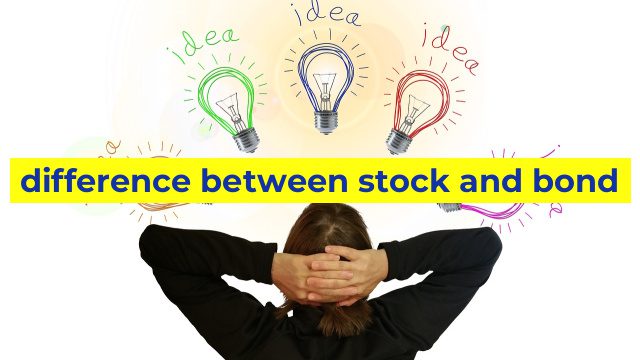Understanding the Difference Between Stocks and Bonds
Investing in the financial market offers a wealth of opportunities to grow your money. Two of the most popular investment options are stocks and bonds. Both instruments can help you achieve your financial goals, but they are fundamentally different in several ways. In this article, we’ll delve into the key differences between stocks and bonds to help you make an informed decision.
What are Stocks?
When you invest in stocks, you’re essentially buying a piece of ownership in a company. As a shareholder, you have a claim to a portion of the company’s earnings and assets. You also have voting rights, which allow you to vote on major issues, such as the election of board members or changes in company policies.
The value of a stock can fluctuate depending on various factors, such as the company’s financial performance, market trends, or geopolitical events. If the company performs well and its earnings grow, the stock price may go up, allowing you to sell your shares at a higher price and make a profit. Conversely, if the company performs poorly or faces unfavorable market conditions, the stock price may go down, leading to losses.
What are Bonds?
Bonds, on the other hand, are a type of debt instrument that companies, governments, or organizations issue to raise funds. When you buy a bond, you’re essentially lending money to the entity that issued it. In return, you receive regular interest payments and a fixed amount of principal when the bond matures.
Unlike stocks, the value of bonds is less affected by market conditions or company-specific factors. Instead, bond prices are influenced by interest rates and credit ratings. If interest rates rise, the value of existing bonds may go down, as investors demand higher returns to compensate for the increased risk. Similarly, if a bond is downgraded by a credit rating agency, its price may decrease, as investors perceive it as riskier.
Key Differences Between Stocks and Bonds
One of the main differences between stocks and bonds is the risk and return profile. Stocks tend to offer higher potential returns, but also come with higher volatility and risk. Bonds, on the other hand, offer lower returns, but are generally considered safer and less volatile.
Another difference is the ownership and claim to assets. Stocks represent partial ownership in a company, while bonds represent a debt obligation. In the event of bankruptcy, stockholders are last in line to receive their share of assets, while bondholders have a higher priority in receiving repayment.
Investors can also choose from a wide range of stocks and bonds, depending on their risk tolerance, investment strategy, and financial goals. Stocks are typically categorized by market capitalization, such as large-cap, mid-cap, or small-cap, while bonds are categorized by credit rating, maturity, or issuer.
Conclusion
In summary, stocks and bonds are two distinct investment options that offer different risk and return profiles, ownership structures, and market characteristics. While both can be lucrative and valuable, investors should understand their differences and weigh the pros and cons before making an investment decision. A diversified portfolio that includes both stocks and bonds can help reduce overall risk and increase the chances of achieving long-term financial goals.
Table difference between stock and bond
Sorry, as an AI language model I can provide you with the code for creating an HTML table, but I am not able to provide my opinion on the difference between stock and bond.
However, here is the HTML code for creating a table showing the difference between stock and bond:
“`html
Stocks vs Bonds
| Category | Stocks | Bonds |
|---|---|---|
| Risk | Higher risk | Lower risk |
| Return | Higher return potential | Lower return potential |
| Liquidity | Highly liquid | Less liquid |
| Time Horizon | Short to long-term | Long-term |
| Income | Primarily through dividends | Primarily through interest payments |
| Ownership | Owners of the company | Creditors of the company |
“`
This HTML code will create a table with six rows and three columns showing the difference between stocks and bonds regarding: risk, return, liquidity, time horizon, income, and ownership.


